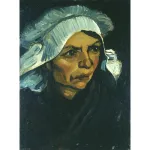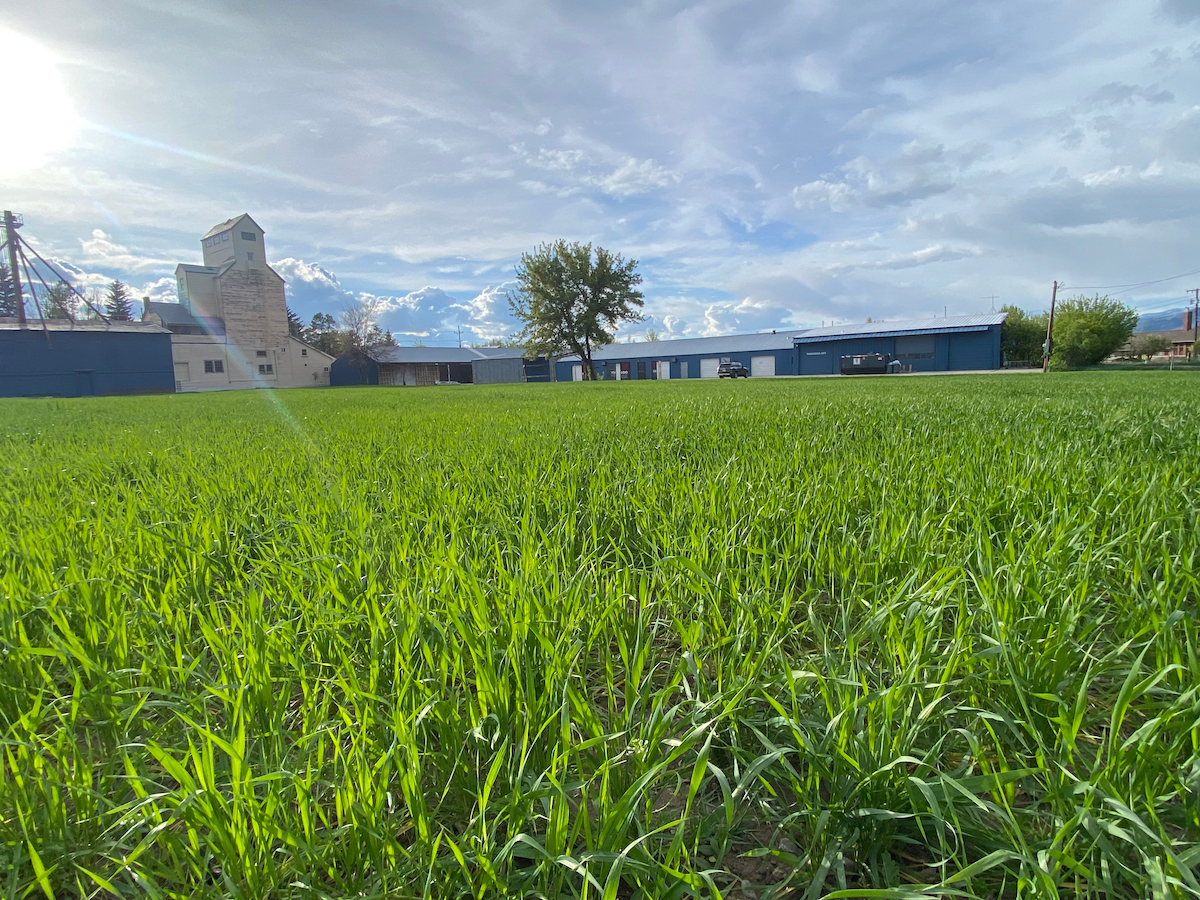
One of the many different kinds of development underway in Bozeman, Montana—a small city that since the pandemic began has been a staple of stories about ongoing urban exodus and rampant population growth—is a patch of land grown over with early sprouts of grain. Such a sight might not seem out of place in Big Sky country, where wheat is a leading commodity crop, but this little field evokes a masterpiece from the legacy of Land art—and marks a new beginning for Tinworks Art, an upstart enterprise that aims to reimagine the past and future of art in the everchanging American West.
Wheatfield—An Inspiration. The seed is in the ground (2024) is a new incarnation of a work that Agnes Denes nurtured in the wilds of Lower Manhattan in 1982. Not far from Wall Street, the World Trade Center, and the Statue of Liberty, swaying stalks of wheat sprang up for four months. That original work, Wheatfield—A Confrontation, was a form of protest against “misplaced priorities and deteriorating human values,” as the artist wrote at the time. The new one is more a show of hope.
“It’s a change, an accumulation, a distinction,” Denes said during an interview in her loft in New York. “I get excited when a project becomes new, and this is totally different because we involved the community. I did the [original] Wheatfield alone. I planted it, harvested it, and did my photography alone. Now I’m involving the people. And the people [in Montana] are different from the people in New York.”
Bozeman and its idyllic surroundings, including areas around Yellowstone National Park and the rest of a state with ample space to spare, are the focus of Tinworks Art, a nonprofit that made a significant move last year in hiring Jenny Moore—who had helmed the Chinati Foundation in Marfa, Texas, for nine years—as its inaugural director. At Chinati, Moore helped expand programming around landmark installations of Minimalist sculpture by Donald Judd, whose idea of Marfa as a sort of high-desert haven for art proved more than a little prescient after his death in 1994. Moore’s contributions to Chinati include the creation of a large-scale permanent installation by Robert Irwin, the restoration of a building devoted to works John Chamberlain, and projects by the likes of Charlotte Posenenske, Bridget Riley, and Solange.
In Bozeman, Moore said she sees an “opportunity to be at the beginning of a new art space in a place that is incredibly dynamic and has captured the imagination of so many people, thanks to enduring interest in the American West and in particular one of the fastest growing micropolises in the United States. Having spent a decade in one frontier, it was an exciting invitation to consider a new one.”
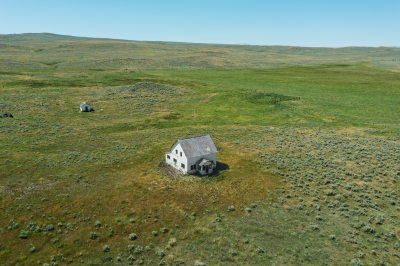
Now a little more than a year on the job, Moore is showing her cards for the first time with “The Lay of the Land,” a new series of artworks presented by Tinworks that opened earlier this month and remains on view through late October. The series includes Denes’s Wheatfield—An Inspiration along with works by James Castle, Layli Long Soldier, Lucy Raven, Stephen Shore, and Robbie Wing. The setting for them all is a patch of land and three old buildings—a tin-manufacturing warehouse, a pig barn, and a mill building.
“The program we’re building on at Tinworks connects with the American West, which is a place, a notion, an idea, and an ideal,” Moore said. “It’s also a very conflicted and complicated place as we consider all the histories and all the peoples affected by how the West has been developed. Part of the dynamic of Bozeman right now is phenomenal growth and how communities are affected by that in both positive and negative ways.” A question that follows from that, Moore said, is: “How can art be centered in an extraordinary time of change?”
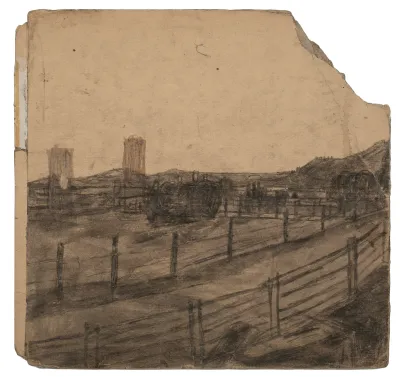
Tinworks Art’s public outreach currently centers Denes’s Wheatfield, which in its new incarnation includes a freely accessible field of wheat in open air. Close engagement with the agriculture department of Montana State University in Bozeman helped make the project possible. There are also plans for the fall harvest involving local mills and an artisanal bakery nearby.
“When I was invited by the board to present a vision for Tinworks, the first artist I thought of was Agnes Denes,” Moore said. “Wheat is such an iconic presence in Montana, and there are many of us who know the iconic image of Agnes standing in her Wheatfield in Manhattan from the visual data bank of the greatest artworks. It is an example of an artist using something familiar to people as a medium while inspiring them to think about it in a very different way.”
The new field includes Bobcat winter wheat, a strain recently developed by plant scientists at MSU (whose mascot is a bobcat). “It’s an opportunity to think about a more drought-resistant strain of wheat,” said Moore. “Because you plant it earlier in the season and it germinates over a longer period of time, winter wheat does not rely on substantial irrigation the way that some spring wheat varieties do.”
Tinworks and Denes have also encouraged locals to plant some wheat in their yards, in a show of solidarity. “As this region is rapidly losing agricultural land to development,” Moore said, “Agnes posed a question: can a community come together creatively to consider a new way of food production? Maybe there’s a way we can reclaim it through community and a creative act, rather than relying on ‘Big Ag.’”
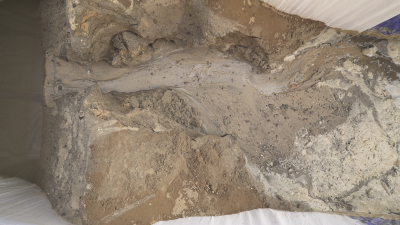
As for the rest of “The Lay of the Land,” Moore turned to artists whose work engages ideas related to “representation of the West and connections to land and place.” The Tinworks warehouse space features works by Stephen Shore, a photographer who has spent time in Montana since the 1980s. During the pandemic, using a Hasselblad camera mounted to a drone, Shore made a series of pictures called “Topographies: Aerial Surveys of the American Landscape.”
Lucy Raven, based in New York but born and raised in Arizona, is showing works related to a “Depositions” series, for which she created dam-break-like conditions with pressurized deposits of sediment and documented their impressions on silk, effectively employing quasi-tectonic forces to create video and landscape “paintings” of a sort. The late James Castle is represented by drawings made from memory of significant settings around the West.
Layli Long Soldier—a Native American poet whose work provided the title for Jeffrey Gibson’s US Pavilion at the Venice Biennale, “the space in which to place me”—is showing two works commissioned for Tinworks last year that consider Indigenous identity and cultural memory. And Robbie Wing is showing a site-specific sound work involving railroad ties and field recordings of trains that run through Bozeman’s northeast neighborhood, where Tinworks is based.
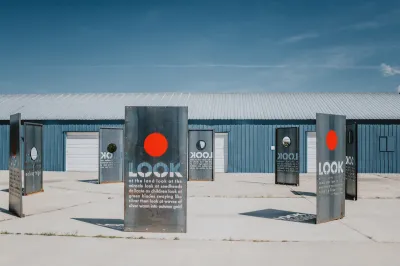
The postindustrial buildings that comprise Tinworks’s indoor exhibition space are in various stages of disrepair, and Moore said she is still considering different development plans. The strategy when the organization was founded in 2019 involved taking the buildings down, as evidenced by a remaining work from that year for which artist Chris Fraser poked 10,000 pinholes into the roof of one of the structures and turned it into a sort of starry light box. But Moore said she is open to different options, though with a goal to have the capacity for year-round programming (the existing buildings don’t have heat) within two years.
“We’re building up a broad base of support. The organizations I’ve been involved with, specifically Chinati, have sometimes had 30 years to develop their community,” said Moore, whose resume also includes time in New York working for the New Museum, the Andy Warhol Foundation for the Visual Arts, Exit Art, and the Guggenheim Museum. “Tinworks is at the beginning of that. But we’ve been fortunate to have the support of several stalwart philanthropists and a strong core base who have enabled us to do ambitious programming.”
Moore said she’s working on the next round of projects and exhibitions and noted that Tinworks recently hired its first director of development. Beyond that, she’s hoping the organization can become a part of the cultural landscape in Bozeman and beyond. “What I’ve been struck by in my year here is how eager and excited people are for community-engaged, inclusive, experimental art experiences,” she said. “Tinworks really can play a civic role as a connecting space.”
